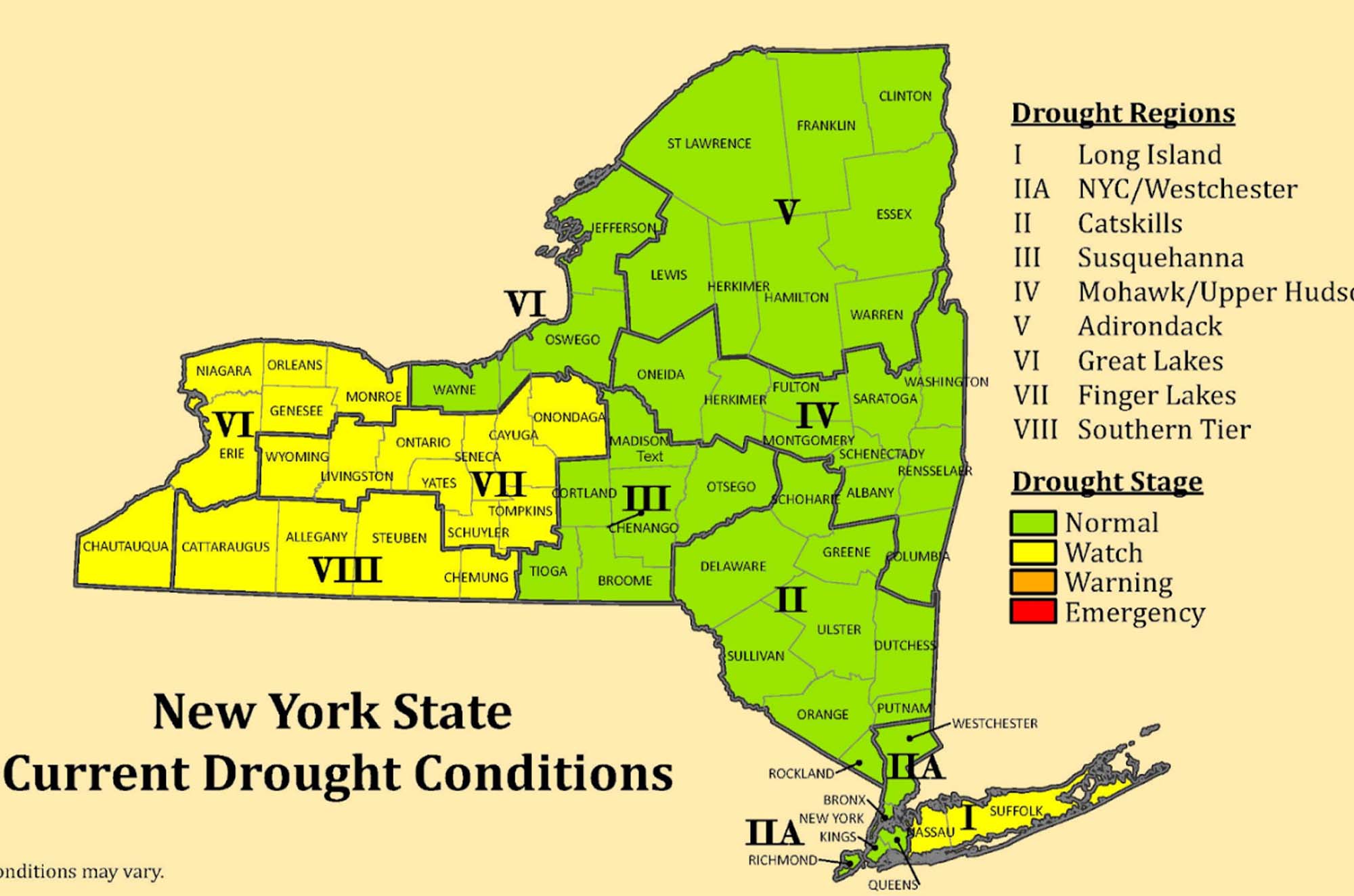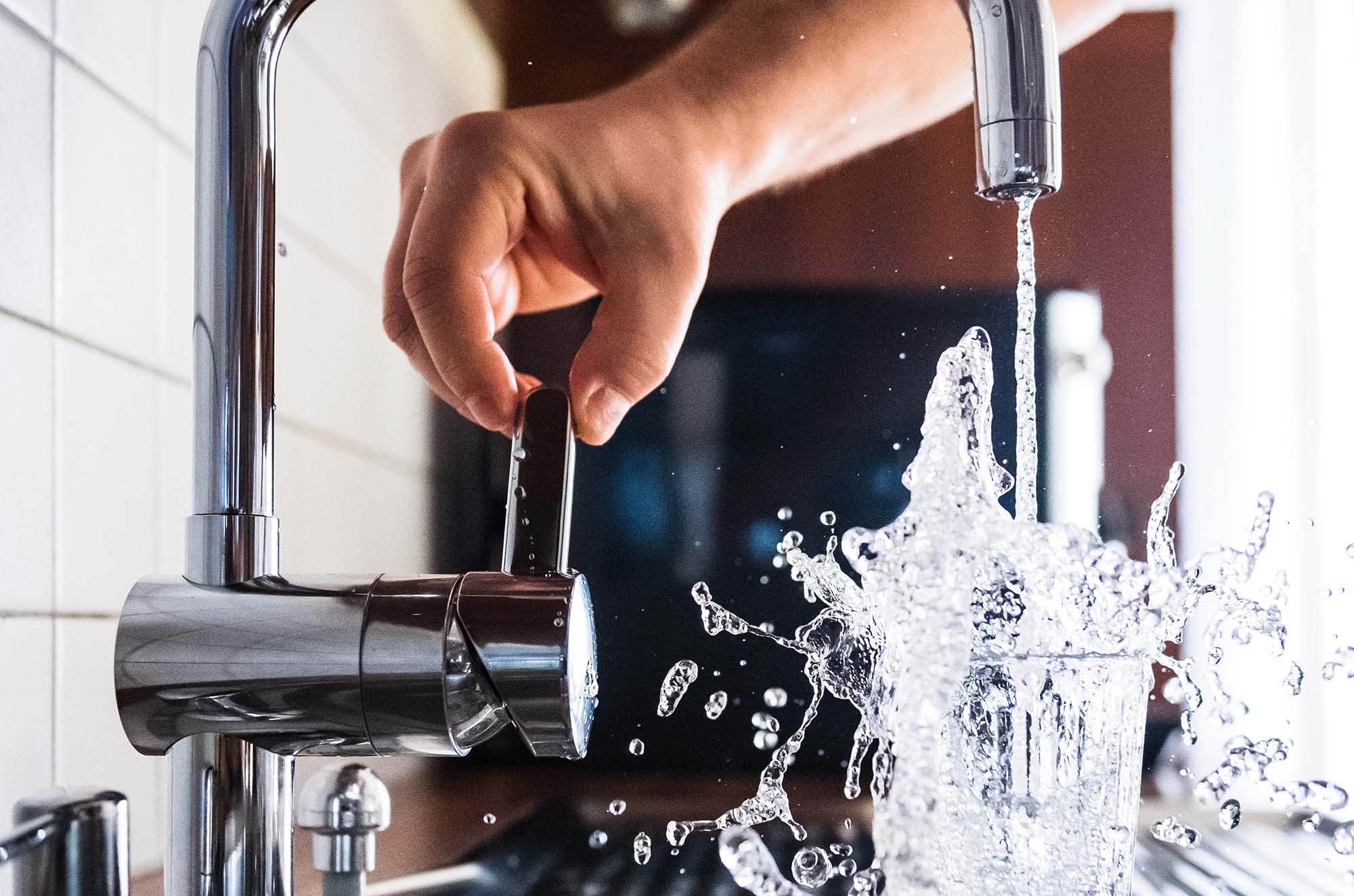Drought Watch: Long Island
By Maria DeKoningHave you noticed that this summer has been surprisingly drier than those in the past? Each day we look at the forecast to see clear or partly cloudy skies, and maybe a small percentage of rainfall that doesn’t actually happen. Despite the beautiful summer days with no use of rain dates, the little to no rain in our forecast has placed Suffolk and 21 other counties in New York on a drought watch by the NYS DEC.

What does this mean?
A drought is defined as “a deficiency of precipitation over an extended period of time (usually a season or more), resulting in a water shortage.” The drought watch is the lowest of the four levels of warnings the state issues for below average rainfall. As of right now the main concern for this notice is that the dry conditions may cause stunted crop growth and increase the risk of wildfires.
The data was collected over the past 90 days and showed that the lower rainfall has had a cumulative impact. Groundwater levels throughout Long Island have been declining over the past few months with no rain in the forecast to improve these conditions. Common indicators of drought include amount of precipitation, rate of streamflow, groundwater levels, and soil moisture
Why is this Happening?
There is no straight answer to our uncommonly dry summer. Many places throughout the globe have been experiencing heat waves, including parts of the U.S., Europe, and north and central China. Even though many say that these abnormalities are the result of climate change, it is too soon to say whether that is the sole cause.
Global warming is a phenomenon that causes extreme heat and severe storms worldwide. It may even be the cause of the worsening drought throughout many parts of the U.S. and the world.
How will this Affect Me?
As of right now, the DEC has not issued any water use restrictions on the state. It is still recommended by officials that we conserve water in our homes in any way we can in case the conditions worsen. If you do experience a water shortage, contact your local agricultural extension, local health department, or DEC regional office
How Can I Conserve Water at Home?

Conserving water is something that we should consider in our day to day no matter how the weather has been. Out of all of the water on the Earth, only 3% is fresh. Fresh water is vital to all life and yet is such a finite resource. Even though Long Island is surrounded by water, that doesn’t mean we have all the freshwater we need to live our lives. Most of the freshwater on our planet is locked into glaciers, or found in lakes, reservoirs, ponds, rivers, streams, wetlands, and groundwater. That being said, it is extremely important to protect the freshwater we have, whether or not we have been issued a drought warning.
Listed below are a few ways to can conserve water daily:
- Fix any leaks around the house. According to the EPA small household leaks can add up to multiple gallons of water lost per day.
- Turn off the tap water while you brush your teeth and wash the dishes.
- Shorten the length of your showers and avoid taking baths.
- Fully load your dishwasher and washing machines before you run a cycle.
- Time when you water your landscape and do not over water. It is important to know just how much water you need to use to keep your lawn and flowers alive.
- Wash your car with water from a bucket instead of spraying it with a hose.
- Cover your poolwhen it is not in use to avoid evaporation of the pool water.
In these times, it is not only necessary that we conserve water, but also that we take smart and environmentally-wise steps to preserve what we have. Saving water saves energy and also saves you money each month on your bill. Check out the EPA website for more tips and tricks on how to make sure you are living as sustainably as possible.




